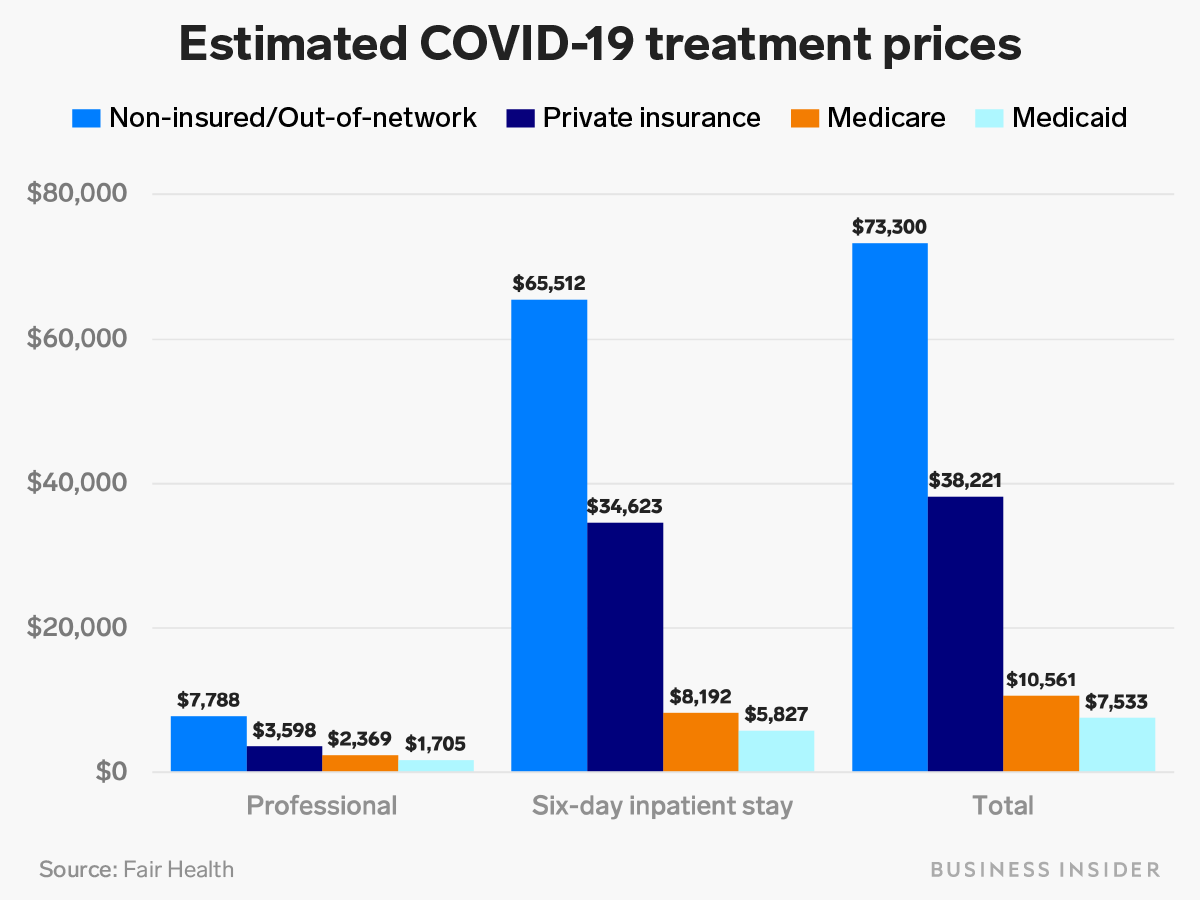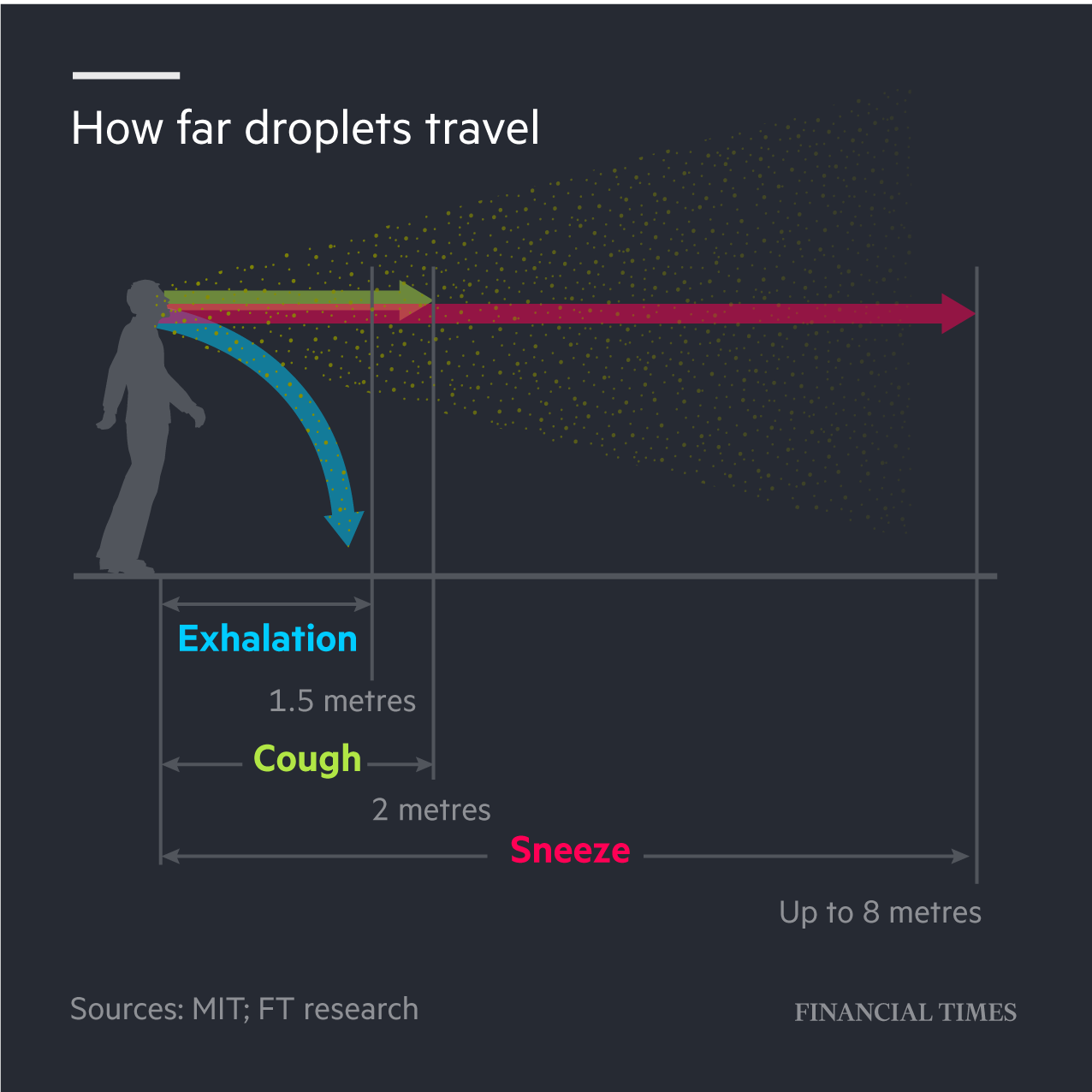testing, tracing, isolating
The world has come into this moment with divisions among its great powers and incompetence at the highest levels of government of terrifying proportions. We will pass through this, but into what? As recently as January, the IMF had no idea of what was about to hit, partly because Chinese officials had failed to inform one another, let alone the rest of the world. Now we are in the middle of a pandemic with vast consequences. But much remains unclear. One important uncertainty is how myopic leaders will respond to this global threat. [Financial Times]
The team at the Harvard School of Public Health used what’s known about Covid-19 and other coronaviruses to create possible scenarios of the current pandemic. “Intermittent distancing may be required into 2022 unless critical care capacity is increased substantially or a treatment or vaccine becomes available,” they wrote in their report. “Even in the event of apparent elimination, SARS-CoV-2 surveillance should be maintained since a resurgence in contagion could be possible as late as 2024.” [CNN]
If we just reopen there will be a second wave, or an endless half open economy. Public health — lots of testing, tracing, isolating — allows you to keep R0 low when there are relatively few cases without shutting down the economy. [John Cochrane]
Understanding the current status of the human herd, however, is harder than it looks. Current tests for SARS-CoV2 are exclusively measures of the viral nucleic acid, exploiting the exquisite sensitivity and specificity of PCR-based amplification strategies. This gives a clear indication of current (or very recent) infection, but it tells us nothing about the cumulative number of people exposed, nor the degree or nature of their immune response to the virus. Added to that, most countries have adopted a testing strategy focused on people with symptoms, giving us a relatively poor understanding of the degree of spread among people without symptoms. If there has been extensive spread of SARS-CoV2 in people who experienced no symptoms, then the fraction of the population with protective immunity may be much higher than predicted from nucleic acid testing among those with symptoms. [Drug Baron]
Immunity is a spectrum. Some viruses result in life-long protection, such as those that cause chickenpox and measles. On the other end of that spectrum, human immunodeficiency virus, or HIV, doesn’t usually provide any protective shield. When it comes to SARS-CoV-2, the virus that causes Covid-19, little is known yet about the body’s immune response to an infection, said George Rutherford, the head of infectious disease and global epidemiology at the University of California San Francisco. “That’s something that’s going to take a while to figure out.” […] Studies of SARS and MERS, which are closely related to SARS-CoV-2, have suggested limits to the body’s immune response. One 2007 report on SARS demonstrated that its antibodies dissipated after an average of two years, making patients potentially vulnerable to reinfection. A study of MERS found antibodies tended to stick around for a bit longer, but not in everyone. And neither study demonstrated whether the presence of antibodies was protection against re-infection. [Bloomberg]
In recent weeks, Covid-19 has rapidly spread throughout New York City. The obstetrical population presents a unique challenge during this pandemic, since these patients have multiple interactions with the health care system and eventually most are admitted to the hospital for delivery. We first diagnosed a case of Covid-19 in an obstetrical patient on March 13, 2020, and we previously reported our early experience with Covid-19 in pregnant women, including two initially asymptomatic women in whom symptoms developed and who tested positive for SARS-CoV-2, the virus that causes Covid-19, after delivery. After these two cases were identified, we implemented universal testing with nasopharyngeal swabs and a quantitative polymerase-chain-reaction test to detect SARS-CoV-2 infection in women who were admitted for delivery. Between March 22 and April 4, 2020, a total of 215 pregnant women delivered infants at the New York–Presbyterian Allen Hospital and Columbia University Irving Medical Center . All the women were screened on admission for symptoms of Covid-19. Four women (1.9%) had fever or other symptoms of Covid-19 on admission, and all 4 women tested positive for SARS-CoV-2. Of the 211 women without symptoms, all were afebrile on admission. Nasopharyngeal swabs were obtained from 210 of the 211 women (99.5%) who did not have symptoms of Covid-19; of these women, 29 (13.7%) were positive for SARS-CoV-2. [The New England Journal of Medicine]
As the coronavirus tears through the country, scientists are asking: Are some people more infectious than others? Are there superspreaders, people who seem to just spew out virus, making them especially likely to infect others? It seems that the answer is yes. […] Superspreading also played important roles in outbreaks of two other coronaviruses, SARS and MERS. “The MERS-CoV outbreak in South Korea was driven primarily by three infected individuals, and approximately 75 percent of cases can be traced back to three superspreaders who have each infected a disproportionately high number of contacts,” wrote George F. Gao, an immunologist and virologist […] The outbreak in South Korea began in 2015 when a 68-year-old man became infected with MERS during travel to the Middle East. He returned to South Korea where he directly infected 29 people, two of whom infected 106 people. The total number of cases in South Korea at that time was 166 — that superspreading event accounted for most of the outbreak. [NY Times]
Coronavirus 10 times more deadly than swine flu, says WHO
70 coronavirus vaccines in development, 3 candidates already undergoing human trials: WHO
Pharmacologic Treatments for Coronavirus Disease 2019 (No therapies have been shown effective to date)
As India’s Covid-19 cases count crossed 9,300 Monday, the Indian Council of Medical Research (ICMR) issued an advisory to begin “pool testing” of samples to increase the number of tests. Pool testing involves up to five samples in one go, rather than one at a time. If a pool comes up positive, each sample will be tested individually. [The Print]
Diagnostic testing to identify persons infected with severe acute respiratory syndrome–related coronavirus-2 (SARS–CoV-2) infection is central to control the global pandemic of COVID-19 that began in late 2019. In a few countries, the use of diagnostic testing on a massive scale has been a cornerstone of successful containment strategies. In contrast, the United States, hampered by limited testing capacity, has prioritized testing for specific groups of persons. Here, the authors review the current array of tests for SARS–CoV-2, highlight gaps in current diagnostic capacity, and propose potential solutions. [Annals of Internal Medecine]
UK app to track coronavirus spread to be launched
Orbital Insight, a California-based Big Data company that uses satellites, drones, balloons and cell phone geolocation data to track what’s happening on Earth, has seen inquiries about monitoring food supplies double in the past two months, according to James Crawford, founder and chief executive officer of the company. […] Orbital customers have been asking for data such as when cargo ships leave ports, when plants close, and the number of passengers traveling through airports. As infections continue to spike, clients in recent weeks began concentrating on tracking grocers, wholesalers, and distribution centers to monitor everything from food supplies to the production of medical supplies at specific factories, Crawford said. [Bloomberg]
Over 500,000 Zoom accounts sold on hacker forums, the dark web
The Deleuze Seminars website is publishing English translations of the seminar lectures given by the French philosopher Gilles Deleuze (1925-1995) at the University of Paris between 1971 and 1987. (via S/FJ)









